Embracing the Silence of the Mustang Mach-E
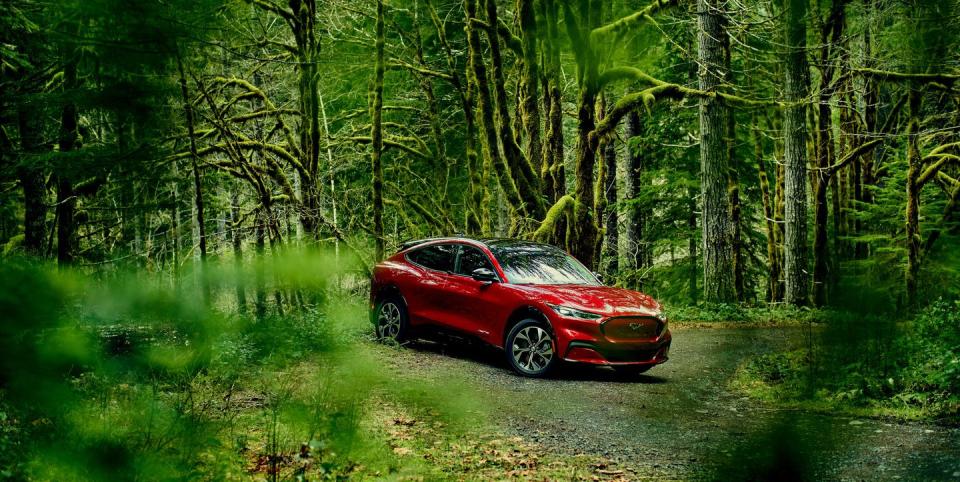
Our cities want us dead. Lead pipes, choking smog, crumbling infrastructure. But those are pittances compared to the noise, that churning undercurrent of sound playing like a horror-movie score outside your bedroom window: waves of belching semis, clattering trailers, thumping stereos and straight-piped Harleys. If that seems hyperbolic, it's not: Noise pollution, generated mainly by transportation, has been scientifically shown to degrades our lives.
Excess noise cleaves a cumulative 1.7 million years of healthy life from the European population annually, one World Health Organization study estimates. It affects humans' guts, hearts, and nervous systems. It stunts learning in school children. Extrapolate that idea globally and noise pollution seems less like the next second-hand smoke and more like some insidious plague. As populations balloon and cities crowd, the problem worsens.
Reflexively then, we yearn for silence, an antidote to the metronomic clack-clack-clack of expansion joints. Anyone who's fled to the countryside, whether for a vacation or a permanent relocation, will agree. But no spot in America’s lower 48 sits farther than about 20 miles from the nearest road. Even fewer spots are free from the drone of air traffic. The walls are closing in. Where, then, to find quiet in a world teeming with noise? And how?
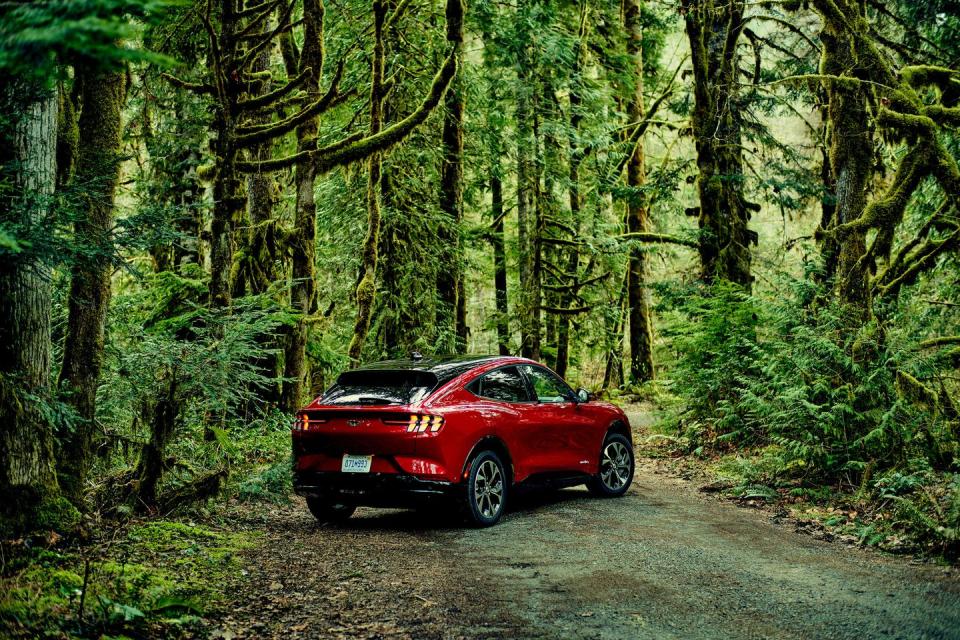
We found a spot—the quietest in North America—deep in the Hoh Rainforest of Washington state. I got there in Ford's freshest idea, a swept-backed, blood-red, electrified pillbox that looks something like inevitability. This is the blue oval's entry into the booming premium electric-crossover segment, a class of vehicle whose mass adoption promises cleaner air and quieter roads.
It’s called the Mustang Mach-E.
"That’s not a Mustang!" a salt-and-pepper beard growled as I slipped the Mach-E politely from my condo parking spot.
"But honey, isn’t it great to see a new Mustang again?" his wife offered. The man considered the galloping-horse badge, then folded his arms.
"Well I don’t know. Maybe."
The name is conspicuous, no way around it. Ford must have foreseen the revolt, because I heard it every time the Mach-E met the peanut gallery:
"What’s that thing? It looks fabulous! AN ELECTRIC MUSTANG? Dammit, that’s no Mustang!"
Because for six decades, Mustangs backed into driveways and living-room windows cavitated with V-8 thunder. Branding this particular chapter in Ford’s history with that badge, juxtaposing an electric crossover against decades of pony-car expectation… well, it took some stones, I’ll give Ford that.
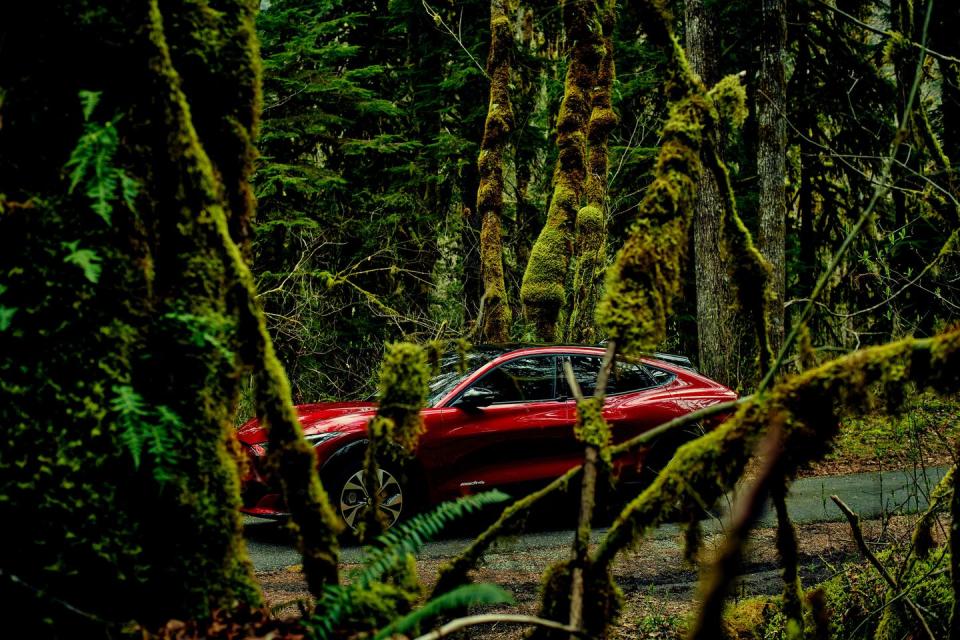
Badging aside, the Mach-E is still as eventful as the county fair. In my experience, only the mid-engine C8 Corvette has drawn more curiosity from passers-by. It’s because the Mach-E rails against the boring crossover’s familiar conventions, opting instead for a swooping roofline, electing tautness where other BEVs edge toward slabby brutalism. Elon’s be-winged crossover looks sexless by comparison. Toll booth operators, shipyard workers, and Seattle’s Amazon bourgeoisie all fawned over the Mach-E, shouting praise as I piloted the machine from the city's bustling harbor toward the Hoh’s quietude.
Of course, this being a crossover, the Mach-E deviates from its namesake. It's got four doors, decent ground clearance, and an aft section that can seat adults in something nearing comfort—all Mustang firsts. But most notably, there’s absence. The thunder has gone to pasture.
It’s a curious junction. By default, electric vehicles operate in near-silence. They’re built to cocoon, fending off road noise and powertrain whir. But nobody ever accused a Mustang of being polite. How, then, should the Mach-E sound, when the majority of the driving soundtrack comes from the car's stereo, and designers could have piped in anything from a Chopin nocturne to a T. rex's fart? It’s a philosophical question for any sports-car manufacturer facing mass electrification.
With Mach-E, that task fell in part to Brian Schabel, a Ford veteran with the evocative job title of Propulsion Sound and Experience Technical Expert. He’s shaped the soundscapes of Ford's heavy hitters: V-8 Mustangs, capable SUVs, and sales-dominating F-150s, weighing spine-tingling exhaust notes against grating drivetrain static.
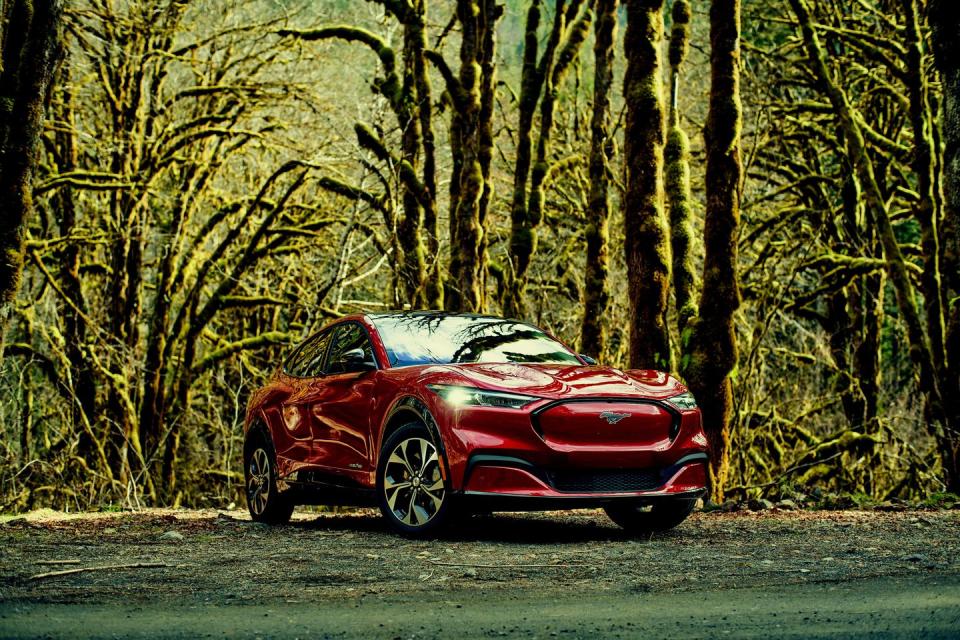
"We want the Mach-E’s sound to make sense," Schabel said. "Internally, one of our biggest things is making sure it was authentic. And when we say authentic—the sound we’re doing is obviously added, but authentic to the image and experience we’re trying to portray. What do people associate with powerfulness and electric mixed? Just trying to key out those things, to make sure it fit."
Ford wasn’t interested in replicating a V-8 sound, which would’ve rightly raised pitchforks. Rather, Schabel said, his crew sought to distill that experience, then fortify it. Through research, questionnaires, focus groups, virtual reality, and old-fashioned tinkering, he and his team identified sounds that resonate with our notions of power, aggression, refinement, and speed.
"There’s certain fundamental tones that come through in a V-8. Those tones, they play with each other, they modulate with each other to make that rumble," Schabel said. "We weren’t trying to necessarily duplicate that, but we know through our research and experience that generally, a low frequency and some of that tone content gives you that perception of power."
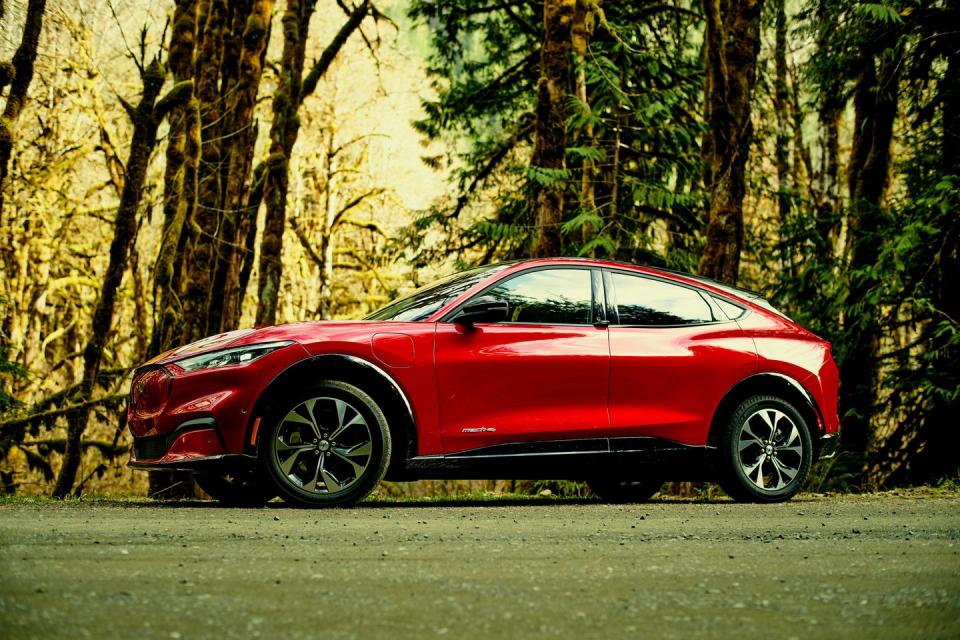
The result: With the Mach-E's drive-mode selector set to "Unbridled," its most high-performance setting, there’s a low-frequency hmmmmmm chasing your heavy right foot, growing louder as the power surges. The note is deep and thrumming, Johnny Cash’s baritone laid over a high-voltage line. It’s subtle, very subtle, almost whispered through the cabin, even with the fast pedal welded to the firewall.
The effect offers pleasant-enough feedback and parallels the refinement of the Mach-E’s glass-smooth torque curve. You feel like the sound was informed by genuine thought, even if it can’t stir emotions like eight cylinders firing. That’s fine for any other electric, but Schabel and the team of Ford sound engineers were given an all-but-impossible task when that galloping horse was fixed to the Mach-E’s nose; no piped-in virtual soundtrack can live up to our collective memories of the Mustang’s noise, that V-8 rumble and the windows rattling in their frames and“Daddy’s home!”
But what can be done? We know loud noise harms us. It harms nature. Legislators have paved our future as pertains to electric cars, mandating a smidge of exterior noise for pedestrian safety but largely committing to a Jetson’s soundtrack for our cities. It’s enough to leave enthusiasts cold—by synthesizing sound in the first place, any attempt at reintroducing genuine audio seems inauthentic. Like eating a steak while trapped in The Matrix, sinking our teeth into the illusion feels like the only option.
Or there’s another choice: Embrace silence.
The Mach-E’s cabin is serene by default, well-insulated from road noise and appointed smartly with a mix of fabrics, leathers, and textures, none of which scream "old-school pony car." At stoplights, the synthetic sound cuts out entirely. A Sixties Stang would rattle our spines; the electric Mustang driver is left with their thoughts. Serenity overwhelms. As transportation, the Mach-E functions best by protecting an unobtrusive world, not disturbing it.
For a lesson in How To Stop Worrying and Enjoy The Quiet, I called up Gordon Hempton, an acoustic ecologist who’s traveled the world cataloging endangered soundscapes. Through his vocation, Hempton recognized the incursion of sound pollution early, and created the One Square Inch of Silence (OSI) project, my Mach-E’s final destination. OSI serves as the test case for "Quiet Parks," places in our natural world—and in our cities—where we might access the tranquility of silence and its many health benefits. I expected Hempton to assure me that ditching noisy internal combustion is a difficult but necessary step forward. He did no such thing.
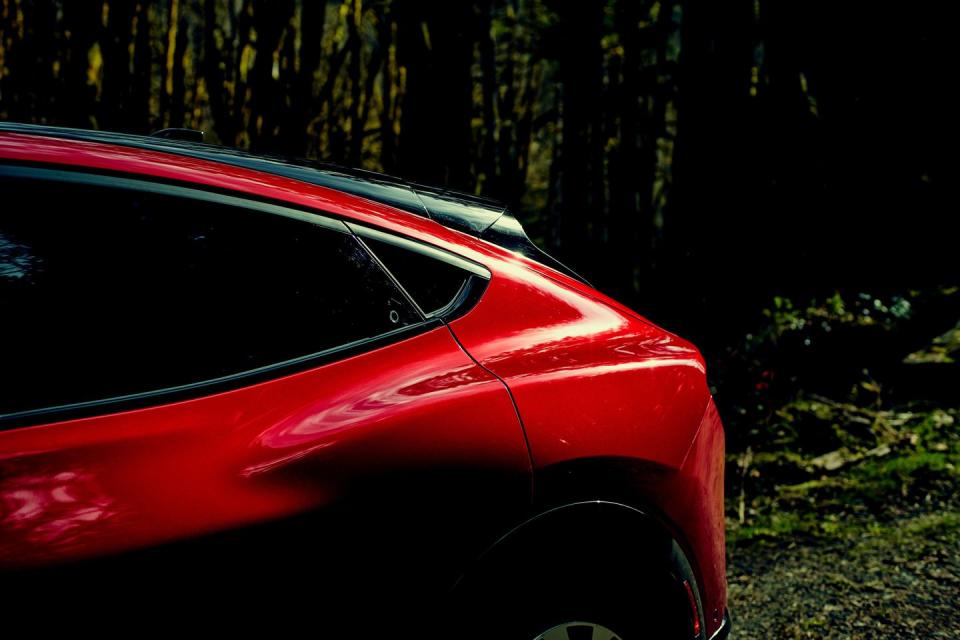
"I am rather fond of cars," Hempton said. "A lot of people consider that to be a contradiction, but who cares? I like the sound of my '64 Vee Dub, which honestly I love so much that I thought it would be my mausoleum. When my kids asked me what they should do after I die, I just told them, 'Leave me in my VW parked in the woods and let my hair grow out. I can become a roadside attraction.'"
Hempton is clearly one of us. He waxed poetic about the first Mustang he ever saw, growing up near Seattle, in 1964. "It was this kind of exciting orange that I had only seen before on fishing lures," he chuckled. "And I knew at that moment, I wanted that car and could not wait to drive." But Hempton acknowledged that eliminating most transportation noise would be a step forward for public health. Curiously, that could benefit us die-hards, by allowing more room for good noises to fill our soundscape.
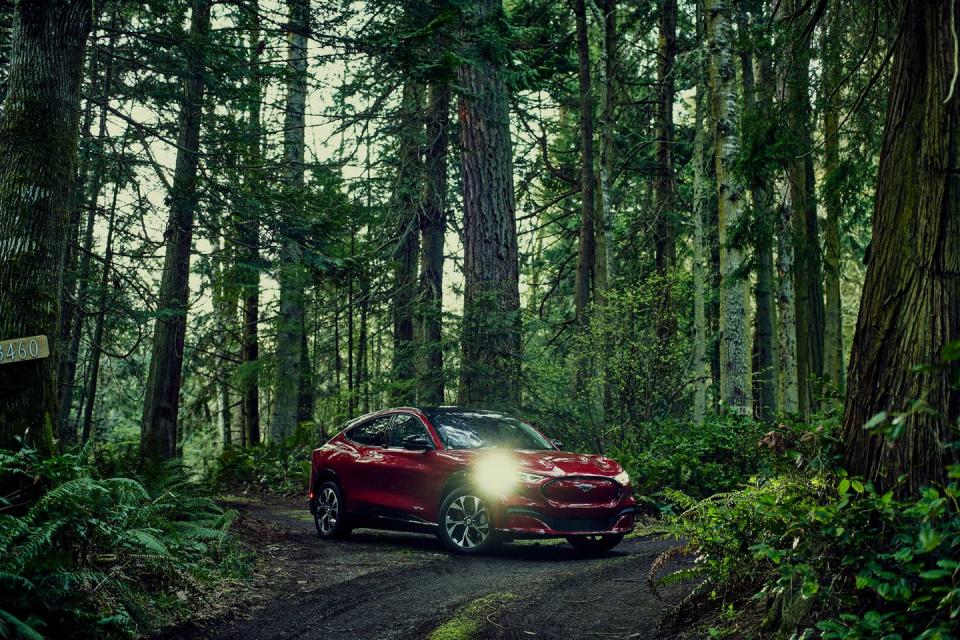
Another point of agreement: "Traffic noise, I think, is a problem for almost all drivers," Hempton said. "It interferes not only with your ability to hear your own car, but it interferes with your ability to hear those cars that you would like to hear. When that Pontiac Goat is throbbing down the road and you know the driver cares about their ride, the first thing you hear is that low frequency rumbling of a perfectly tuned engine,” he said. “And, oh my gosh, that thing is ready to take off, right? It commands attention. So for a listener, those low frequency events really demand attention.”
Relief, then. We don’t have to create a conflict between car buffs and naturalists. At least, Hempton doesn’t see it that way. He suggests something resembling compromise: Vehicles like the Mach-E can fill the moments where a rumbling classic doesn’t fit our needs. Commuting, for example.
"Let's say now you're shuttling the kids. It's your opportunity to have a one-on-one with the kids. They aren't watching television, neither are you. And in the quiet space of your electric car, you can have a meaningful conversation," he said. "You can hear every word they say, and not only the words that they choose, but how they say it. So you can know if they're really speaking from the heart. The level of intimacy increases."
And that idea could extend to electric vehicles that take us to nature. If you’re out for a hike deep in the Hoh rainforest, leave the V-8 behind and revel in isolation. On a Sunday-morning drive, fire up your classic and enjoy the way that bakelite steering wheel reverberates against your fingertips.
Will compromise like this survive oncoming legislation? Can humanity ever give up those joyous things our parents warned us about? It's not likely, even if we should. Smoking killed the Marlboro man, after all. Like any indulgence, we should strive for balance: Sacred natural places left undisturbed, and urban centers where classic cars weave between stress-free commuters, spitting noise and nostalgia over the cityscape. A perfect vision of the future that protects silence and, God willing, grants us the freedom to shatter it.
You Might Also Like

 Yahoo Autos
Yahoo Autos 